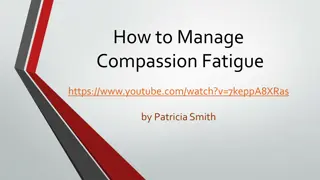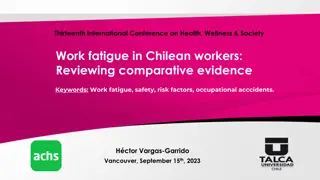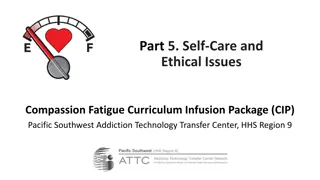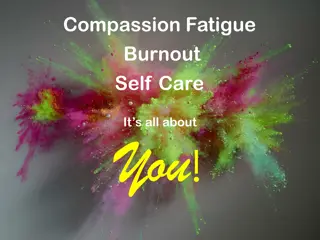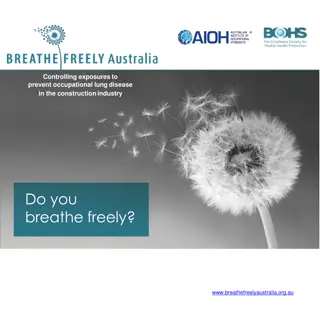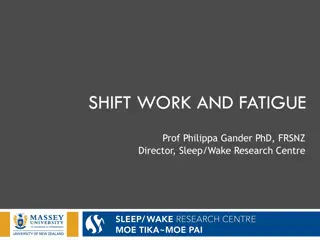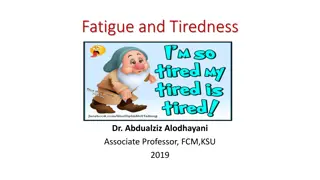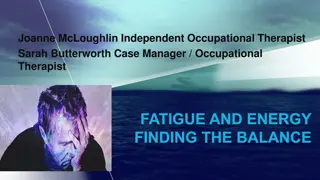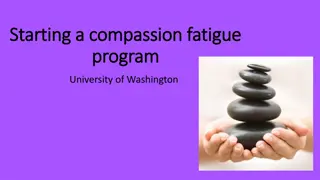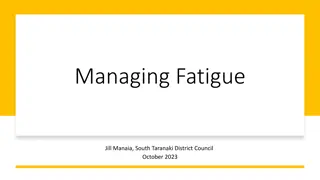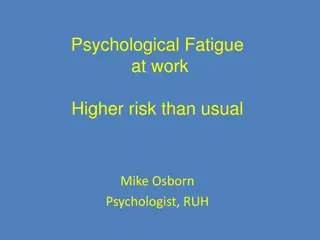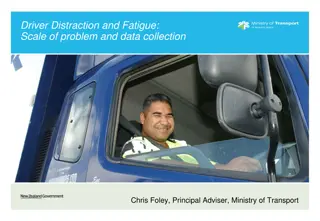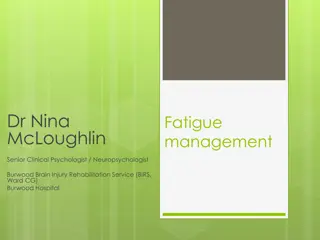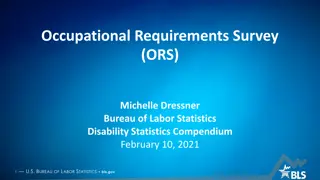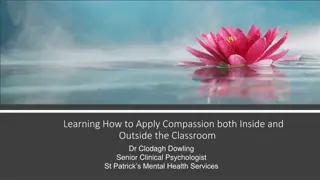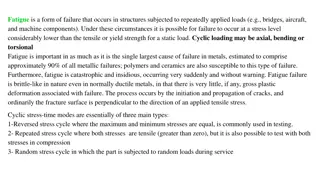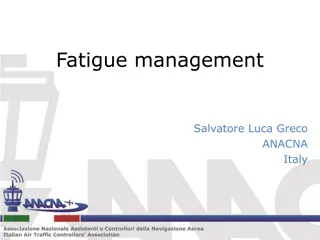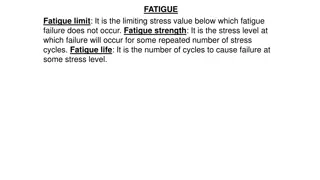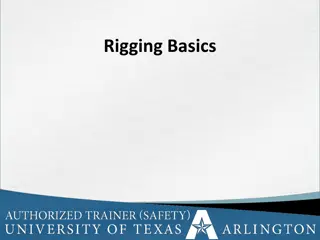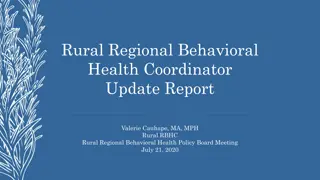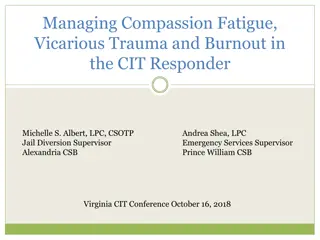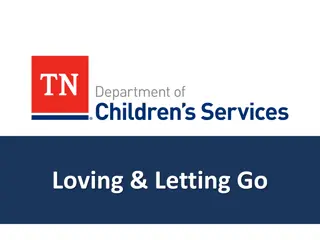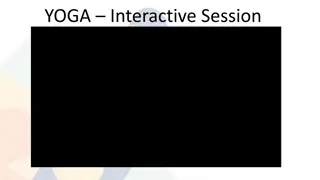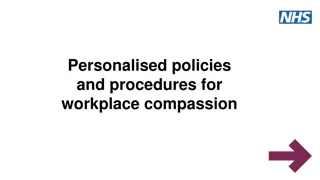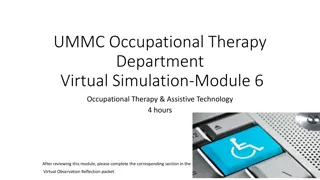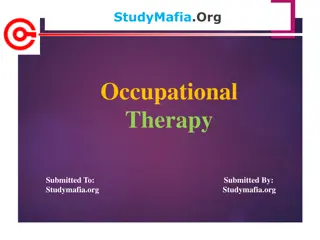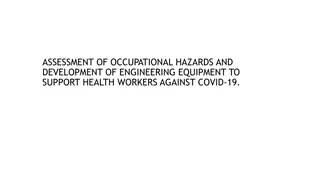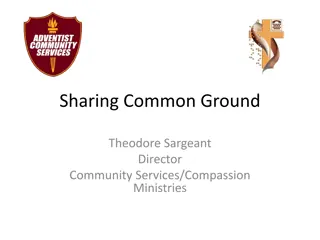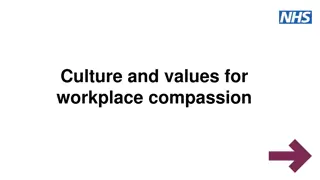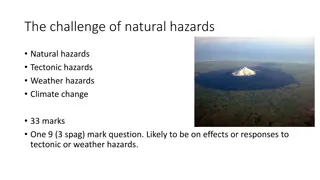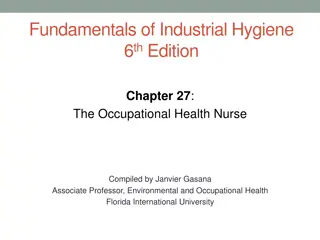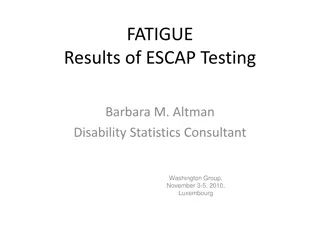Understanding Compassion Fatigue and Occupational Hazards in Behavioral Health Workforce
Preparation in the behavioral health field involves equipping oneself with the necessary knowledge and skills to address occupational hazards like compassion fatigue. This condition arises from the emotional demands of the job, leading to vicarious traumatization, secondary traumatic stress, and compassion fatigue. Clinicians, who absorb their clients' pain daily, are at risk of significant emotional and cognitive changes. It is essential to recognize these risks and have strategies in place to manage them effectively.
- Compassion Fatigue
- Occupational Hazards
- Behavioral Health
- Vicarious Traumatization
- Secondary Traumatic Stress
Download Presentation

Please find below an Image/Link to download the presentation.
The content on the website is provided AS IS for your information and personal use only. It may not be sold, licensed, or shared on other websites without obtaining consent from the author. Download presentation by click this link. If you encounter any issues during the download, it is possible that the publisher has removed the file from their server.
E N D
Presentation Transcript
Part 2. Defining Compassion Fatigue and Related Conditions Compassion Fatigue Curriculum Infusion Package (CIP) Pacific Southwest Addiction Technology Transfer Center, HHS Region 9
Preparing to be in the behavioral health workforce requires knowledge, skills, and tools to deal with and effectively manage the occupational hazards associated with the profession. Bride et al., 2007, p.155
Part 2 Outline Occupational Hazards for the Behavioral Health Workforce Definitions of compassion fatigue and other related terms Definition of secondary traumatic stress and research findings
It is now widely recognized that the indirect exposure to trauma involves an inherent risk of significant emotional, cognitive, and behavioral changes in the clinician. Bride et al., 2007, p.155 Bride et al., 2007, p.155 Clinicians take in some level of their clients pain by: facilitating sessions listening to stories collecting data as part of their efforts to intervene to identify issues provide treatment services with kindness and empathy
Just Part of the Job To work with those who are vulnerable and suffering, particularly trauma populations, inherently requires clinicians to be actively ready to use their own personal psychological resources in the form of empathy and compassion on a daily basis. While this may seem obvious to those of us in the profession, we maintain that this requirement of the job is quite unique in comparison to other professional disciplines In other words, the emotional requirements of clinical practice, specifically the chronic use of empathy and compassion, are simply not required as part of the essential skill set in other professions. Newell, 2016, p.310
These emotional requirements of clinical practice can lead to: vicarious traumatization (VT) secondary traumatic stress (STS) compassion fatigue (CF) * supported by a growing body of empirical research Adams, Boscarino, & Figley, 2006; Bride, 2004, 2007
Vicarious Traumatization refers to a transformation in cognitive schemas and belief systems resulting from empathic engagement with clients traumatic experiences that may result in significant disruptions in: One s sense of meaning, connection, identity, and world view One s affect tolerance, psychological needs, beliefs about self and others, interpersonal relationships, and sensory memory Pearlman & Saakvitne, 1995, p. 151
Secondary Traumatic Stress was defined by Figley as the natural and consequent behaviors and emotions resulting from knowing about a traumatizing event experienced by a significant other the stress resulting from helping or wanting to help a traumatized or suffering person (1995, p. 7). According to Bride et al. (2007), with the exception that the traumatic exposure is indirect, secondary traumatic stress is nearly identical to posttraumatic stress, including symptoms associated with PTSD, such as a. Intrusive imagery, b. Avoidance of reminders and cues c. Hyperarousal d. Distressing Emotions e. Cognitive Changes f. Functional Impairment Bride et al., 2007; Figley, 1995, 2002; Figley & Roop 2006
Secondary Traumatic Stress Studies Findings from a recent study on Child Welfare Workers Literature review highlights a disagreement about whether Secondary Traumatic Stress (STS) is, indeed, a syndrome distinct from burnout, compassion fatigue, and vicarious trauma Literature did support that some of the symptoms associated with STS such as intrusive thoughts, emotional numbness, trouble concentrating, and feeling discouraged, jumpy, or annoyed (among others) were harmful to already-overburdened and stressed child welfare professionals In an earlier STS study a common symptom reported by social workers was: thinking about clients without intending to (40.5 % of social workers in study) The new Child Welfare Workers Study found 69 % child welfare workers reported experiencing that intrusive symptom Rienks, 2020
Compassion Fatigue is the emotional and physical fatigue experienced by professionals due to their chronic use of empathy in helping others in distress Figley and colleagues introduced compassion fatigue as a more user-friendly term to describe the phenomena of secondary traumatic stress. There are some distinctions between these terms, but all three terms refer to the negative impact of clinical work with traumatized clients. Figley et al., 1995, 1996, 2002; Newell et al., 2016; Stamm, 2010 Turgoose & Maddox, 2017
Other Terms in the Compassion Fatigue Literature Co-victimization Secondary Survivor Emotional Contagion Secondary victimization Traumatoid Stress Empathic Identification Empathic Attunement Newell et al., 2016
The most insidious aspect of compassion fatigue is that it attacks the very core of what brings helpers into this work: their empathy and compassion for others. Figley Institute, 2012
There are Ways to Prevent Compassion Fatigue Develop a self-care plan that includes: Exercise Nutrition Sleep Creative endeavors Spiritual Activities Social Support Organizations should: Promote discussions of self-care plans Encourage leadership to model self-care Offer regular trainings specific to warning signs for compassion fatigue Newell & MacNeil, 2010
This ends Part 2 of the five-part Compassion Fatigue and the Behavioral Health Workforce Curriculum Infusion Package (CIP) Other parts of this CIP can be found in the Products & Resources Catalog on the Pacific Southwest ATTC website: http://www.psattc.org


